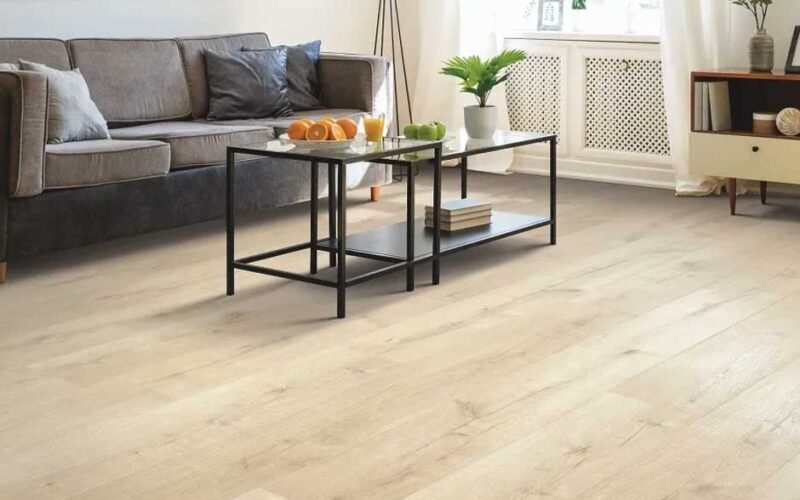TikTok is a glorious place for home inspiration. It’s bursting with clever hacks, mini makeovers, and oddly satisfying cleaning montages. But according to Beyond Property Management solutions, among the genius ideas are a few questionable trends that definitely shouldn’t make their way into your home, especially when it comes to flooring. While these viral tricks may rack up millions of views, they’re often more flash than function, and in some cases, they could even damage your floors.
So before grabbing the walnut or turning your mop into an ice rink, take a moment to think things through.
Don’t Use a Walnut to Fix Wood Floor Scratches
It sounds like something straight out of a fairytale, doesn’t it? Rub a magical walnut over a scuffed wooden floor and poof! The scratch disappears. While the oil in walnuts can temporarily darken shallow marks on certain types of wood, it’s more of an illusion than a long-term solution.
Why it went viral:
It’s cheap, natural, and makes for a dramatic before-and-after shot. Plus, who doesn’t love the idea of fixing a floor with a snack?
The problem:
This method only masks the scratch, rather than repairing it and the natural oils can go rancid over time, especially in warm, humid environments. This can lead to odours or discolouration; hardly the dreamy DIY fix promised on camera. Besides, when it comes to cleaning and caring for wood flooring, rubbing nuts into hardwood isn’t going to be the best practice.
A better fix:
For minor surface scratches, you can use a purpose-made wood touch-up pen or wax repair kit that matches your floor tone. These are designed to blend in and bond with the finish without compromising your floor.
Don’t Ice Mop Your Floors
If you’re not familiar, this TikTok trend involves sprinkling ice cubes over hard floors and then using a mop to “melt-clean” them. Some even add essential oils or cleaner directly to the ice before sliding it around. It’s messy, and oddly dramatic, but looks oh-so-satisfying in video form.
Why it went viral:
There’s something visually addictive about watching cubes melt into sparkling clean floors. It also taps into that satisfying-cleaning-content niche that TikTok does so well.
The problem:
Excessive water, even in ice form, is the enemy of many floors. Wood and laminate floors are particularly sensitive to moisture, and allowing water (and ice) to sit on the surface can cause warping, swelling, and even lifting at the edges. Plus, adding oils or undiluted cleaning agents directly to your floor could damage the finish.
A better fix:
There are simpler tips for keeping your floor clean, you really don’t need to go crazy with TikTok trends. Just stick with a lightly damp microfibre mop and a cleaner designed for your specific floor. If you’re craving a scent boost, go for a floor-safe, diluted essential oil mix, but always patch test first.
Don’t Paint Your Floors for a Quick “Glow-Up”
Painted floors can look incredible in the right setting, but TikTok tends to gloss over the prep work, materials, and maintenance needed to actually pull it off. Many videos show people slapping wall paint or chalk paint directly onto tiles or wooden boards, skipping primers, sealants, and sanding altogether.
Why it went viral:
It’s bold, creative, and gives a room an instant transformation. For many, it seems like a dream fix for dated floors.
The problem:
Without the proper groundwork, that beautiful painted floor can quickly chip, peel, or scratch, especially in busy homes. Tiles and sealed wood aren’t designed to bond with ordinary paint, and one enthusiastic dog or rolling chair can undo hours of work. Even done properly, painted floors require specific topcoats and ongoing care to stay fresh.
A better fix:
If you really want a new look, consider peel-and-stick vinyl tiles or luxury vinyl planks that mimic stone or wood but are designed for easy, damage-free installation. Or for a more permanent refresh, speak to a flooring professional about refinishing or replacing existing boards.
Floor Fails & DIY Don’ts
DIY culture is thriving on TikTok, and there’s plenty to love about the creativity and confidence it inspires. But when it comes to flooring, shortcuts can come at a cost. What looks fabulous on a 60-second loop might not hold up in real life, especially under muddy boots, paw prints, or spilt drinks.
Always think about the material under your feet. Is it moisture-resistant? How does it react to oils or chemicals? What kind of finish does it have? Understanding your floor type can help you steer clear of viral mishaps and make smart, long-lasting decisions instead.
In short: be inspired, but not impulsive. When in doubt, skip the walnut and call in the experts.










